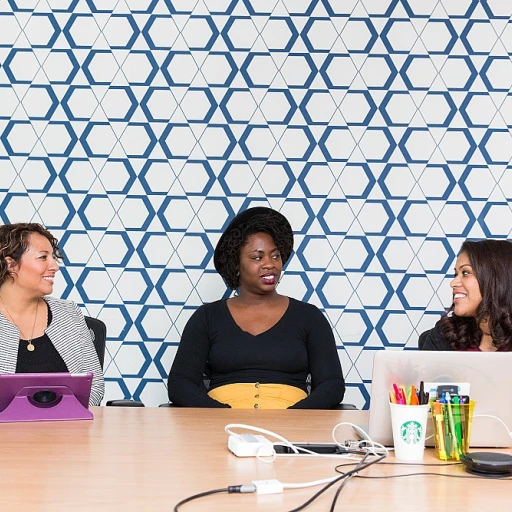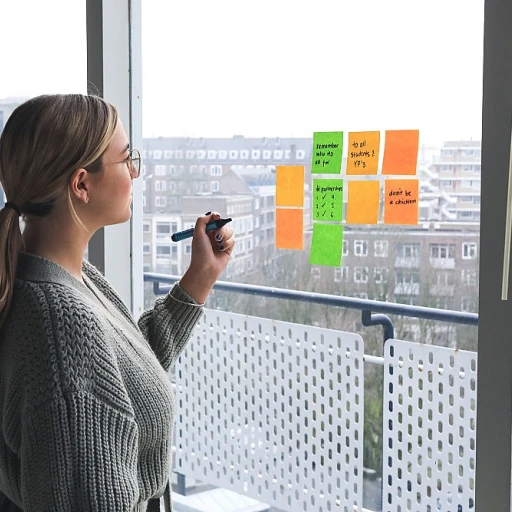AI's Role in Redefining Work Hours
The Evolution of Work Hours Through AI
The emergence of artificial intelligence in the workplace has ushered in a new era of flexibility and adaptability in work hours. As technology evolves, we are witnessing a shift from the traditional nine-to-five schedule to more dynamic workweek models. AI is playing a pivotal role in shaping how this transformation unfolds.
AI's ability to analyze large sets of data enables businesses to understand peak productivity times, thus allowing for the optimization of work schedules. Companies in the private sector are adopting flexible work hours, driven by AI insights that can enhance productivity gains and workforce efficiency. This flexibility is not only beneficial for the organizations seeking to boost productivity but also supports workers in managing their work-life balance more effectively.
Some sectors, particularly those involving customer service, have already observed a significant impact of AI on daily operations. AI tools can manage routine tasks, process data swiftly, and provide real-time updates, allowing human workers to focus on creative and strategic aspects of their jobs.
As organizations continue to explore the potential of AI, there are concerns about job losses and how these could affect the labor market. However, the shifts in time management and job responsibilities may open new opportunities for growth in emerging occupations. While predicting the future precisely is challenging, the adaptation and implementation of AI technology in redefining work hours will likely continue to influence not only productivity growth but also broader economic growth.
More importantly, as we look ahead, the role of AI in shaping the future work scenario will require a balance between automation and human ingenuity. Whether it's remote work or a compressed work week, the integration of AI into our workdays will continue to redefine our understanding of productivity. The McKinsey Global Institute's research suggests that the future of work will increasingly hinge on leveraging human capital alongside advanced technologies, creating a synergy that could ultimately reshape the workplace experience.
Balancing Automation and Human Creativity
Striking the Balance Between Humanity and Technology in Work Environments
In the wake of technological advancement, striking a balance between automation and human creativity presents both opportunities and challenges. As artificial intelligence permeates various occupations, its presence in the workplace calls for a strategic integration that blends routine tasks with the creative spark humans bring to their jobs.
Workers increasingly find that AI enables them to focus more on creative endeavors while elevating productivity. By taking over mundane day-to-day tasks, artificial intelligence frees up time for professionals to harness their unique skills in innovation. This shift not only boosts productivity but also revitalizes human capital.
However, the potential for job losses in certain sectors cannot be overlooked. The McKinsey Global Institute suggests that while automation may displace some roles, it also opens up a myriad of new opportunities in the evolving landscape of future work. This scenario requires a diligent approach to adopting these technologies while considering the impact on workers.
To effectively balance these elements, employers must emphasize workplace experience by encouraging a culture that values human creativity. A targeted approach in the net adoption of AI ensures legacy systems are seamlessly integrated with new digital solutions for maximum productivity gains.
Furthermore, the private sector witnesses notable economic growth with AI-driven transformation, making this the opportune time to thoughtfully introduce artificial intelligence solutions. By prioritizing roles that human creativity uniquely benefits, companies can maintain a healthy equilibrium where the future work landscape respects both the contributions of advanced technology and the invaluable human touch.
Explore how
Limited Brands Aces ETM Employee Portal is redefining the workplace by fusing technology with human strengths and weaknesses.
Harnessing AI-Powered Tools for Optimal Efficiency
AI-driven productivity tools are rapidly transforming the landscape of workplace efficiency. With these technological advancements, workers can experience significant productivity gains by automating repetitive and time-consuming tasks, thereby freeing up more time for activities that require human creativity and strategic thinking. From automated scheduling tools that optimize the work week to intelligent customer service bots capable of handling mundane inquiries, these innovations are seamlessly woven into the day-to-day operations of many sectors.
The private sector is particularly keen on leveraging AI tools to boost productivity and enhance the workplace experience. Companies are exploring AI solutions that align with the future work scenarios, as outlined by global leaders in the field like the McKinsey Global Institute. By embracing these developments, businesses not only aim for economic growth but also intend to prepare their human capital for an evolving labor market.
Additionally, the integration of AI tools into the workplace may lead to an interesting future in regards to job dynamics. As some occupations experience reduced demand due to automation, others may see a surge in necessity, prompting a reevaluation of skills and roles. As such, organizations must strategically adopt these technologies to ensure a balanced approach to job evolution and workforce management.
In understanding the potential impact and determining the strategic adoption of AI-driven productivity tools, it becomes essential to
ask key questions when evaluating a prospective employee. This ensures that the workforce is adaptable and future-ready, aligning seamlessly with the technological trajectory and its implications on the workplace.
Challenges of AI Integration in the Workplace
Hurdles in AI Implementation at Work
Implementing AI in the workplace poses significant challenges that organizations need to be mindful of. One of the main issues is the potential for technology to outpace the current workforce's skills, creating a gap in human capital readiness. For instance, sectors that rely on customer service and other people-oriented occupations may struggle as automation continues to evolve, affecting how jobs are structured and performed.
The transition towards an AI-integrated work environment often requires extensive data collection and analysis, which can be overwhelming for companies that haven't yet embraced such practices. Furthermore, the adoption of AI comes with the risk of job losses, not only in the United States but globally, where productivity gains do not always translate into economic growth for the labor market.
Moreover, achieving a balance between AI-driven productivity tools and human creativity is critical to avoid deskilling workers. While AI has the potential to boost productivity and streamline tasks, it also necessitates a reevaluation of job roles to ensure they still provide fulfillment and developmental opportunities for employees.
An essential aspect of AI integration is its impact on workplace experience, particularly regarding remote work scenarios. While AI can enhance data-driven decision-making, a complete reliance on this technology could undermine the nuanced understanding that comes from human intuition and experience.
A recent report by the McKinsey Global Institute emphasizes that AI's adoption must be carefully managed to align with organizational goals while considering the broader implications on both the private sector and the workforce. The future of work is undeniably tech-driven, yet organizations are challenged to make sure this transformation is inclusive and beneficial for all employees.
Impact on Employee Well-being and Work-Life Balance
Impact on Workplace Dynamics and Employee Well-being
The infusion of artificial intelligence into the modern workplace is influencing work dynamics significantly, as it alters how tasks are distributed among workers. AI technologies streamline repetitive and mundane jobs, paving the way for workers to focus on more meaningful and engaging occupations. As AI-driven productivity tools continue to manifest across various sectors, the impact on employee well-being and work-life balance is substantial.
Notably, AI adoption is reshaping work hours, introducing a more flexible work week. This flexibility is helping align work hours with individual peak productivity times, which can improve overall job satisfaction and employee happiness. Workers are finding new autonomy in balancing personal and professional lives, a marked shift from traditional day work schedules.
AI's influence doesn't only stop at time management. Productivity gains achieved through AI can lead to economic growth, as sectors see improved outcomes in productivity growth rates. However, as roles evolve and some tasks are automated, the labor market might face disruption. This could lead to both potential job losses in certain areas and the creation of new roles that enhance human capital, requiring a careful balancing act by organizations to maintain employee morale and engagement.
Research institutions like McKinsey Global have highlighted these scenarios, underscoring the importance of proactive planning and strategic adoption of AI to mitigate adverse effects on the workforce. As organizations navigate this transition, they must also consider the private sector's unique challenges in maintaining workplace experience quality while benefiting from technological advances.
In this evolving landscape, understanding the intersection of technology, people, and productivity will be crucial for fostering a future work environment that supports both business objectives and employee well-being. The transition to AI-enhanced workspaces presents an opportunity to redefine the future of work, achieving productivity without compromising the health and happiness of employees.
Future Trends in AI and Employer Branding
Anticipating Future Scenarios with AI
The landscape of employer branding is set to transform significantly as artificial intelligence continues to evolve. Organizations will need to adapt to the changing work dynamics introduced by the integration of AI, adjusting their approaches to attract and retain talent effectively.
The future work environment will likely emphasize flexibility, with AI-driven tools supporting a balance between human creativity and automated efficiency. This shift promises to enhance productivity and resilience in occupations across various sectors. Mckinsey Global emphasizes the potential of AI to boost productivity growth significantly in the coming years, benefitting both employers and employees.
AI is expected to redefine traditional work weeks and tasks, moving towards more customized work schedules that enhance employee work-life balance. This transformation could see workers spending shorter days on tasks, allowing more time for personal development and increased engagement in the workplace.
However, the adoption of AI brings challenges as well, particularly concerning job losses and the evolution of human capital needs within the labor market. Organizations must prepare for these changes by investing in technology and training.
Looking ahead, the potential of AI to reshape customer service and remote work scenarios cannot be overlooked. As businesses continue to explore these possibilities, they must effectively communicate their employer brands to maintain a competitive edge.
In summary, as AI becomes more embedded in our day-to-day work experiences, organizations that embrace these trends will likely lead in economic growth and workplace experience enhancements, setting new standards in the private sector.












